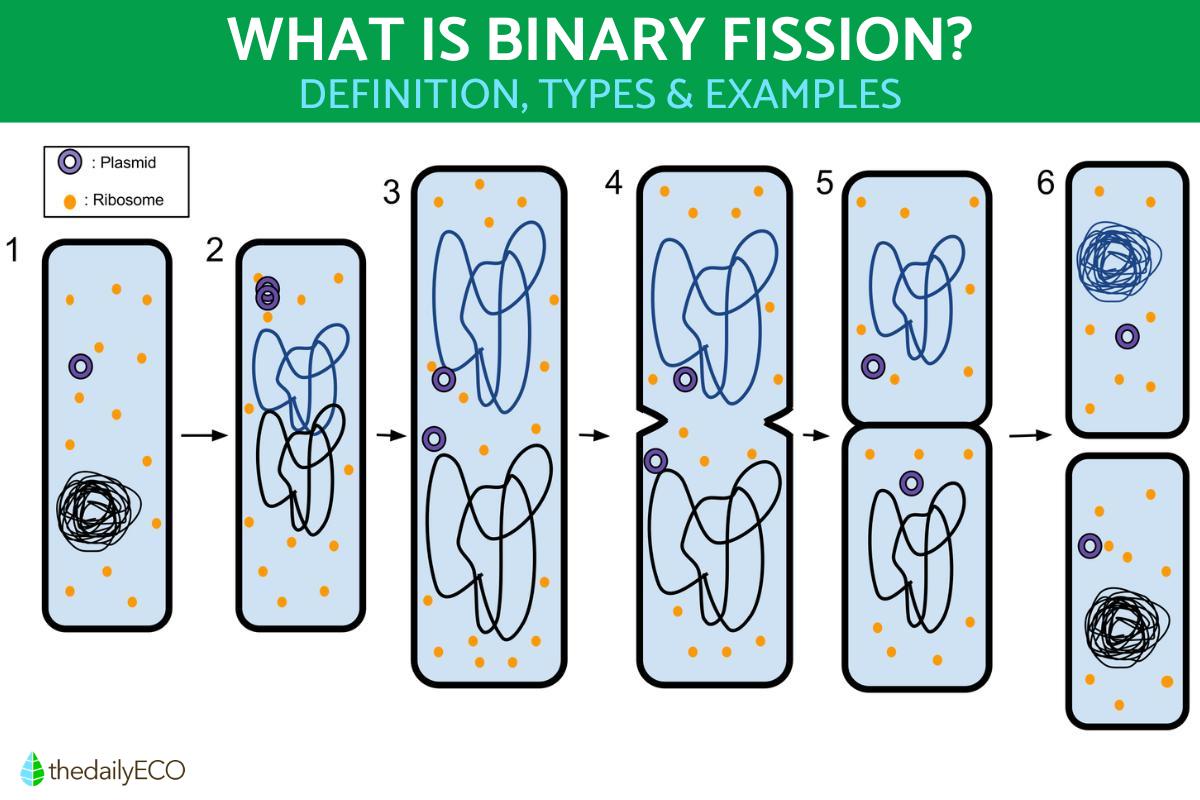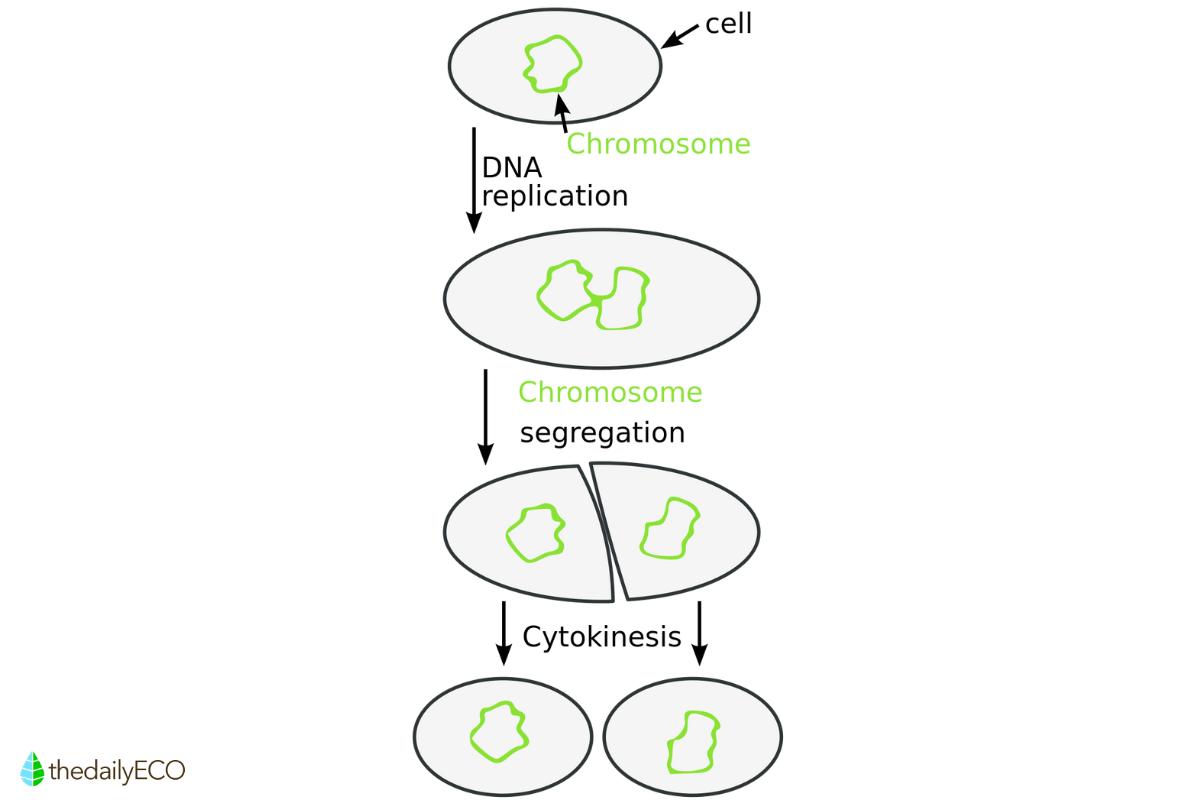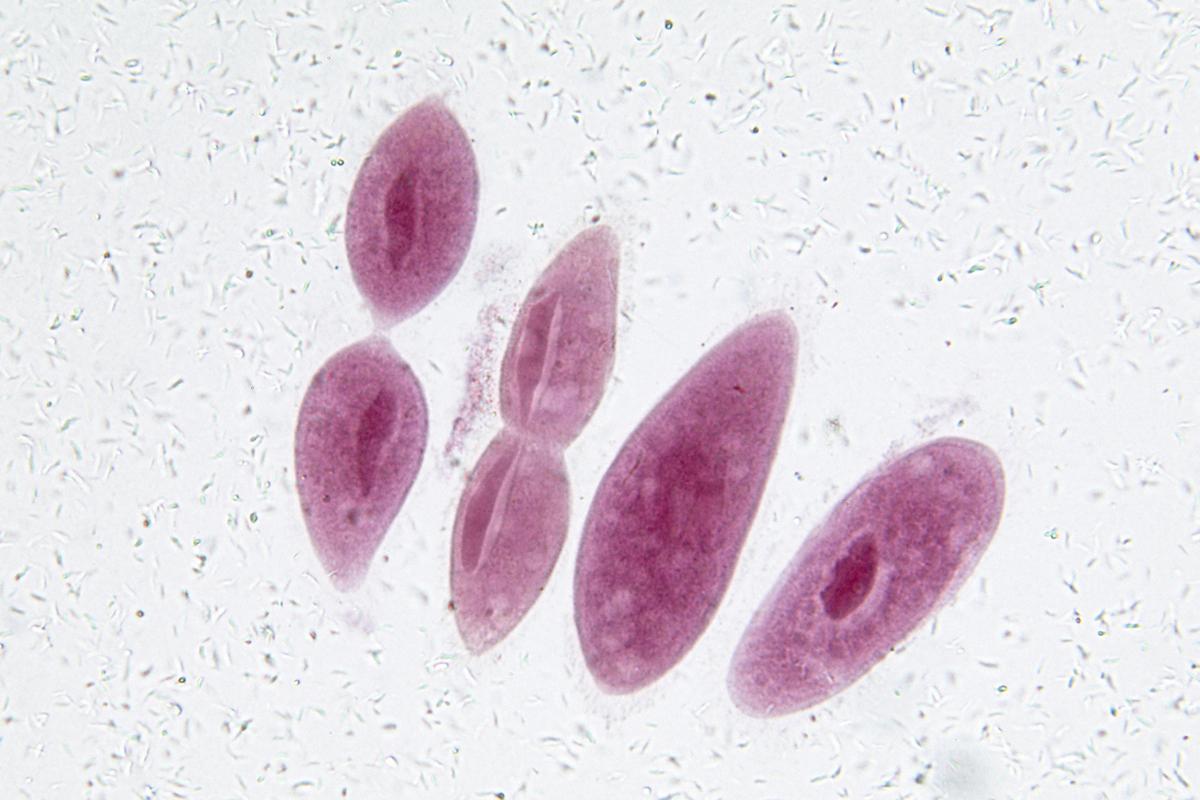What Is Binary Fission in Biology?


Binary fission is a method of asexual reproduction that involves the simultaneous duplication of DNA and division of the cytoplasm. In doing so, it generates two identical daughter cells. This mainly takes place in prokaryotic cells such as bacteria, but it can also take place in unicellular eukaryotes. It has 4 stages which are DNA replication, cell growth, genome segregation and cytokinesis. The most common types of binary fission are transverse, longitudinal, orthogonal and asymmetric binary fission.
Learn more with thedailyECO about what is binary fission in biology? We look at the stages of binary fission, the types of binary fission and examples of binary fission in nature.
What is binary fission?
Binary fission is a method of asexual reproduction present in archaea, bacteria and protozoa. Protozoa is a type of unicellular eukaryote while the others are prokaryotes. It is a process of cell division which does not occur in multicellular eukaryotes.
The cell division known as binary fission in cell biology involves the simultaneous duplication of DNA and the division of the cytoplasm, generating two identical daughter cells in the process. Fission refers to the act of division and it is binary because it divides into two parts. It exists in comparison to multiple fission. The latter is a form of cell division in unicellular organisms which results in multiple daughter cells. It cannot take place in multicellular organisms neither.
Learn more about the differences between unicellular and multicellular organisms in our related guide.
Stages of binary fission in biology
The binary fission process in unicellular organisms can be divided into four stages:
- DNA Replication: begins with the circular DNA chromosome attached to the cell membrane, where replication begins. The DNA is duplicated in both directions until the two new strands meet and DNA replication is complete.
- Cell growth: as DNA replication occurs, the bacterial cell increases in size. The cell membrane grows between the two copies of the chromosome, facilitating their separation to opposite ends of the cell and initiating the segregation of the genome.
- Genome segregation: this process is continuous, accompanying the growth of the cell and the replication of the DNA chromosome. Once replication is complete, one copy of the chromosome separates and migrates to the opposite end of the growing cell, initiating cytokinesis.
- Cytokinesis: begins with the formation of a ring of proteins, similar to the contractile ring in animal cells. This creates a cleavage furrow in the middle of the cell. This groove divides the cytoplasm into two parts. During cytokinesis, other proteins synthesize new components of the cell wall and plasma membrane, forming a dividing structure known as the septum. This septum finally separates the daughter cells, thus completing the binary fission process.
Some additional aspects to consider with binary fission:
- Bacteria: in bacteria such as E. coli, the origin of replication (OriC) is located at one pole of the bacteria before replication, migrating to the opposite pole after completing replication.
- Proteins: binary fission depends on proteins such as FtsZ which form a ring at the equator of the cell and recruits other proteins necessary for cell division. Proteins such as FtsK and murein hydrolases also participate in the separation of chromosomes and daughter cells.
- Plasmids: some bacteria have plasmids which also replicate. These are small floating packets of DNA and they are not distributed evenly among daughter cells. This can cause genetic variations in the bacterial population.
Learn about the differences between bacteria and viruses in our related article.

Types of binary fission in biology
The original cell can divide in various ways, depending on the axis or plane in which cell growth and division occurs. Based on the cleavage plane, the most common types of binary fission are the following:
- Transverse: elongated, roller-shaped bacteria tend to grow in length and divide in half in their transverse plane, i.e. widthwise.
- Longitudinal: some roller-shaped bacteria increase in thickness and divide lengthwise, resulting in two parallel daughter cells. After division, the cell looks like two rollers side by side, i.e. in parallel.
- Orthogonal: in certain spherical bacteria, such as Staphylococcus aureus, division occurs in an orthogonal plane. This means it is perpendicular to the previous division plane, forming clusters of bacteria.
These three types of binary fission involve the division of the cell exactly in half, producing two daughter cells of equal size. Some bacteria undergo asymmetric fission where the division of the cytoplasm begins closer to one of the poles. This is similar to a form of budding where buds smaller than the parent cell are formed. Before these buds separate, they can grow to almost the same size as the mother cell.
Discover more about the types of cells and how they divide with our article on the difference between haploid and diploid cells.

Examples of binary fission
As we have stated, binary fission only occurs in unicellular organisms. For this reason, it is common in single-celled organisms such as bacteria. Here we see some examples of the different types of binary fission in biology:
- Transverse binary fission: this method of division is widely common in bacteria, such as Escherichia coli and Bacillus subtilis. In protist eukaryotes, binary fission of the protozoan Paramecium is often referred to as transverse.
- Longitudinal binary fission: this type of division is rare and is found in a few bacteria, such as the marine bacterium Candidatus Thiosymbion oneisti which lives associated with nematodes. In protist eukaryotes, binary fission of the alga genus Euglena is often referred to as longitudinal.
- Orthogonal binary fission: in spherical bacteria such as Staphylococcus aureus, division occurs in an orthogonal plane, i.e. one that is perpendicular to the previous division plane. Because of this division characteristic, S. aureus often forms clusters of bacteria.
- Bipartition or asymmetric fission: the pathogenic bacteria Chlamydia trachomatis and some forms or variants of B. subtilis exhibit this type of asymmetric division.
Now we know more about the binary fission form of cell division, you may want to know more by looking at our articles on the phases of the cell cycle and the difference between mitosis and meiosis.
If you want to read similar articles to What Is Binary Fission in Biology?, we recommend you visit our Biology category.
- Alberts, B. (2004). Molecular biology of the cell (4th ed. edition). Omega Editions. ISBN 978-84-282-1351-6.
- Campbell, N. A., & Reece, J. B. (2007). Biology. Pan American Medical Ed. ISBN 9788479039981.







